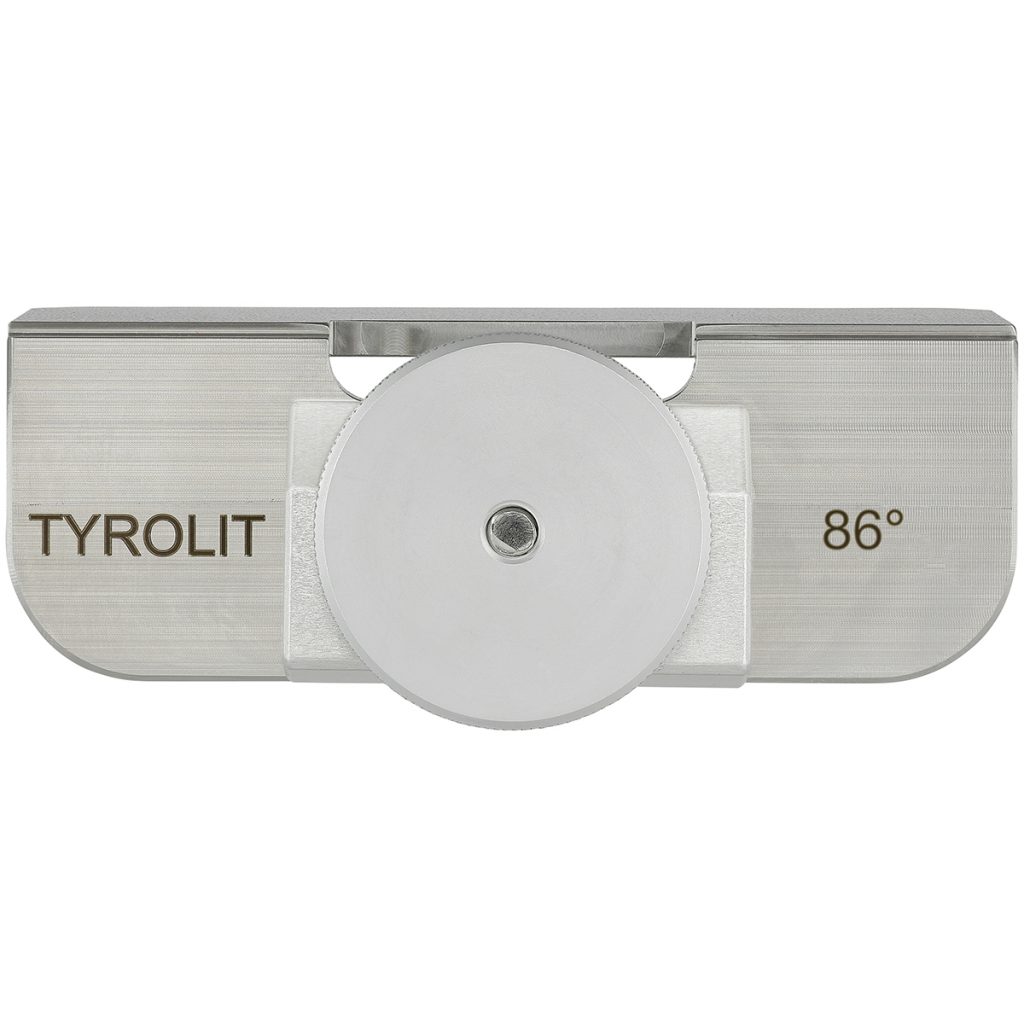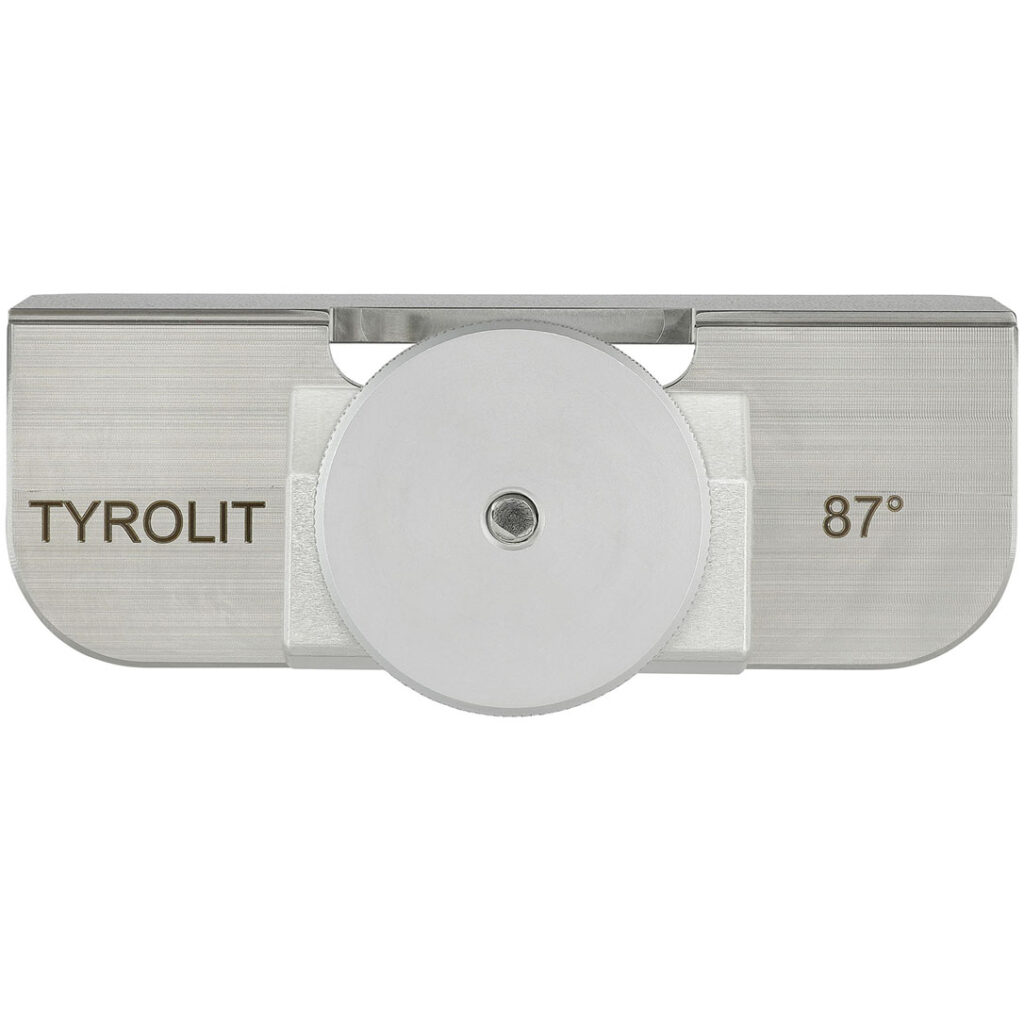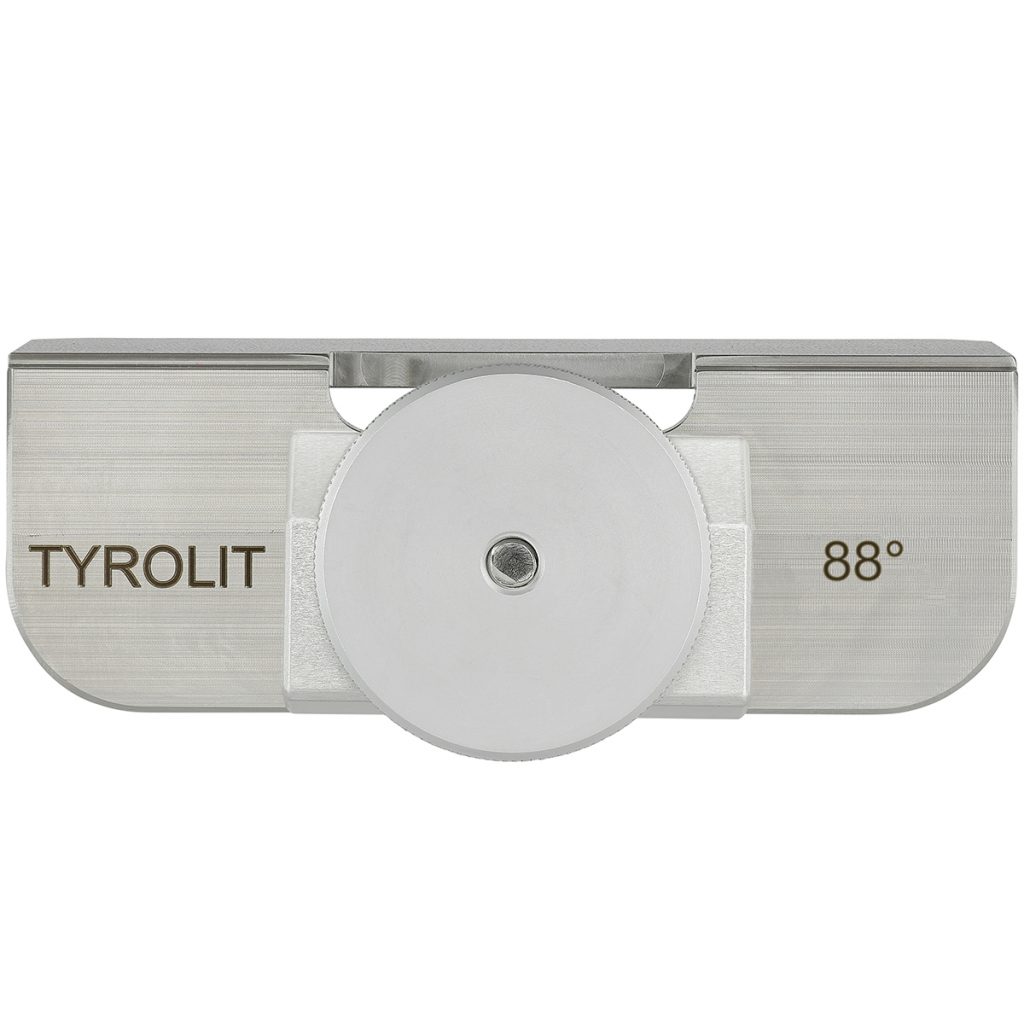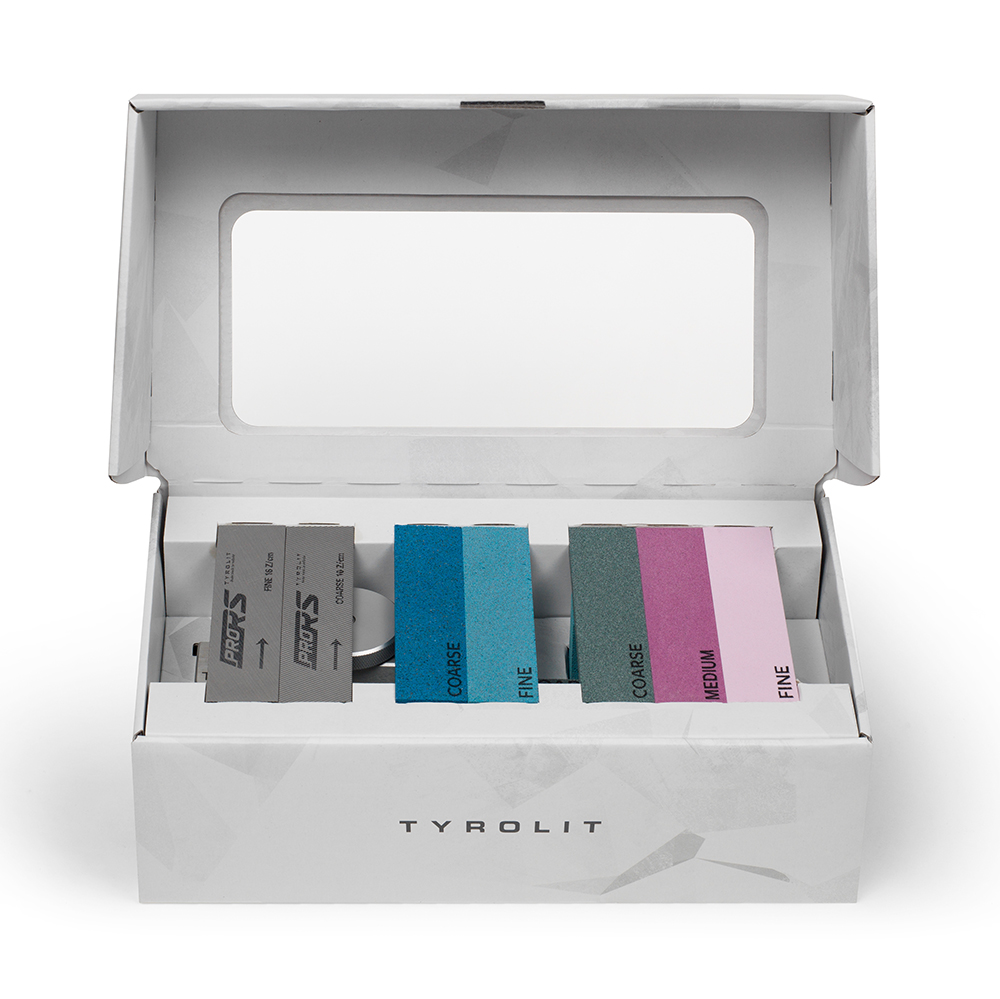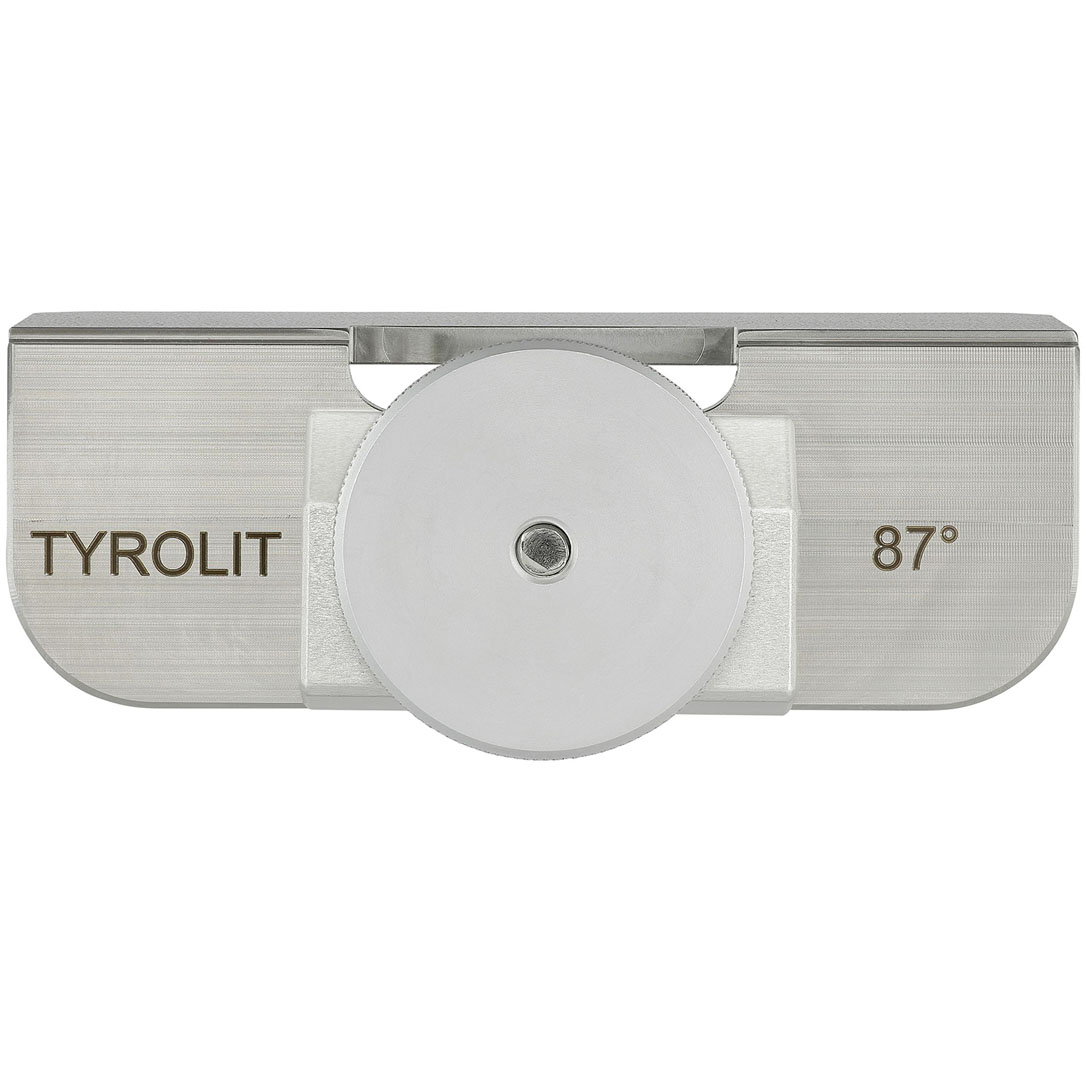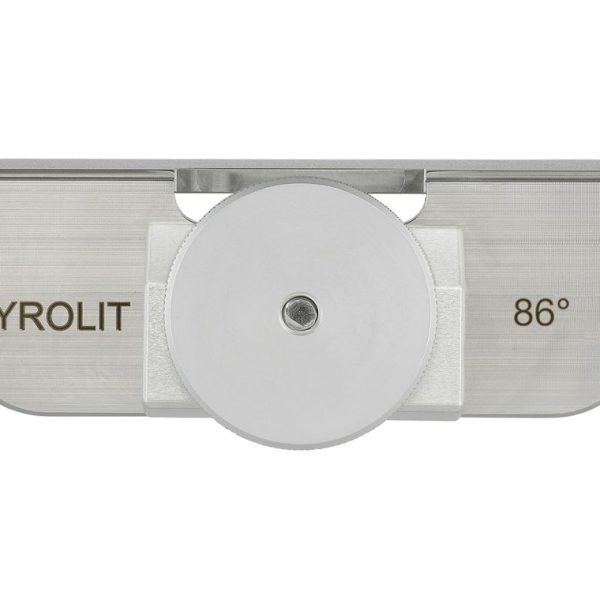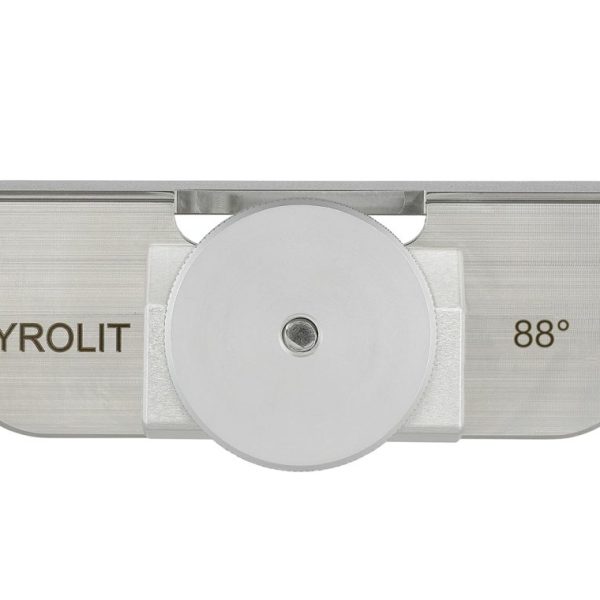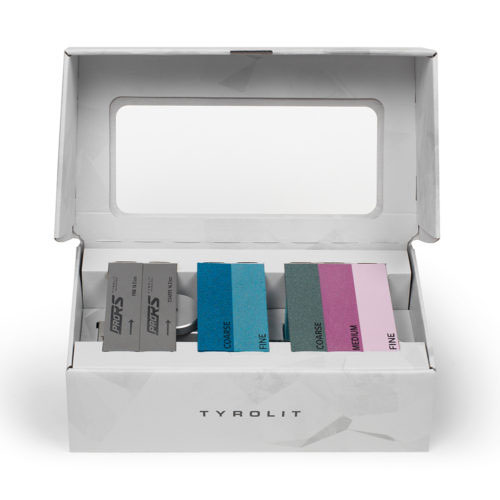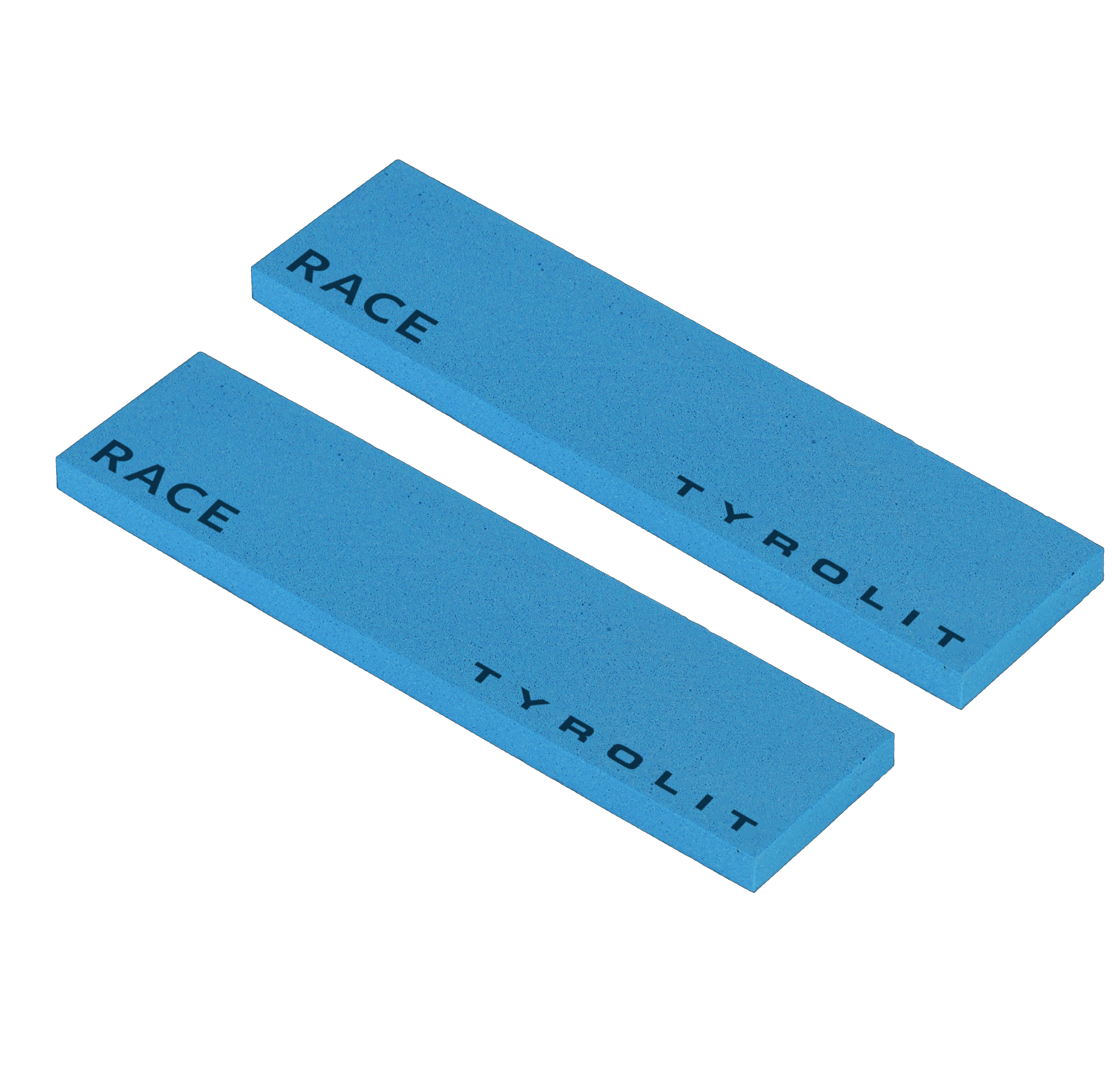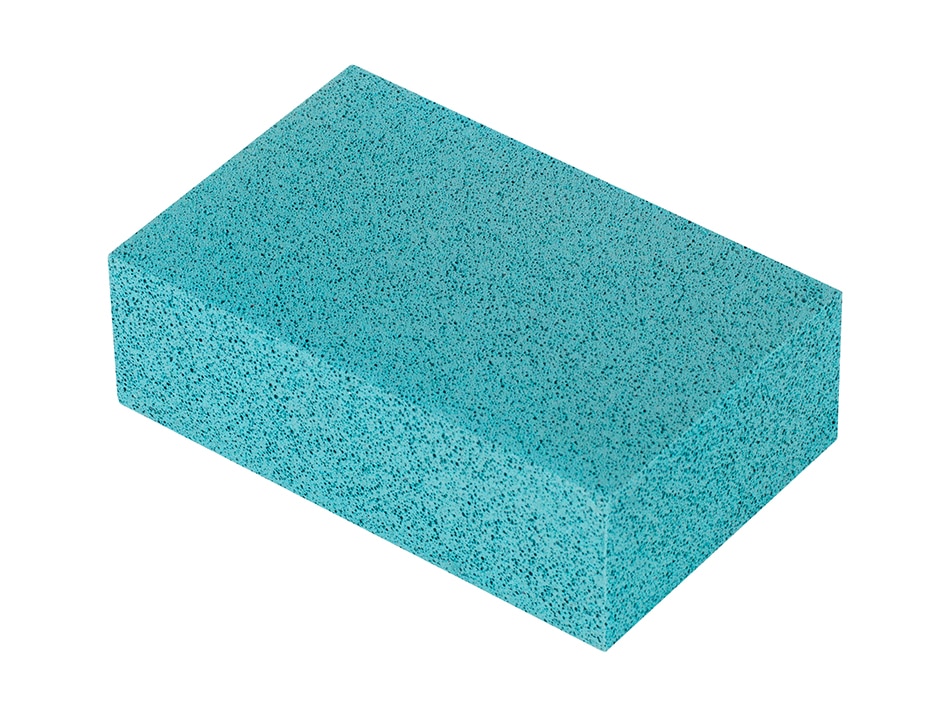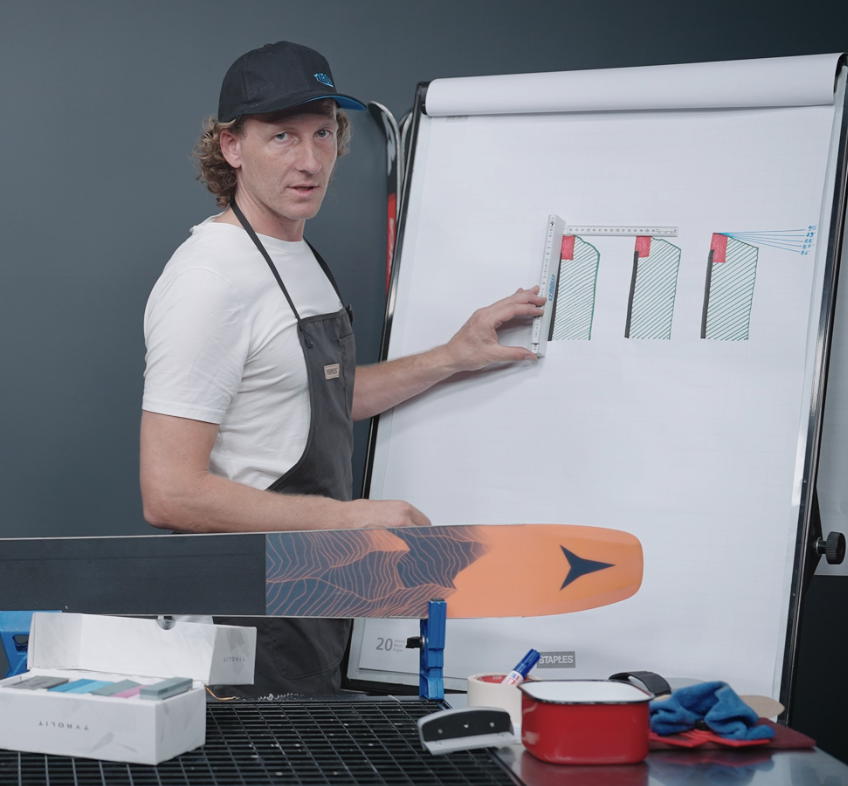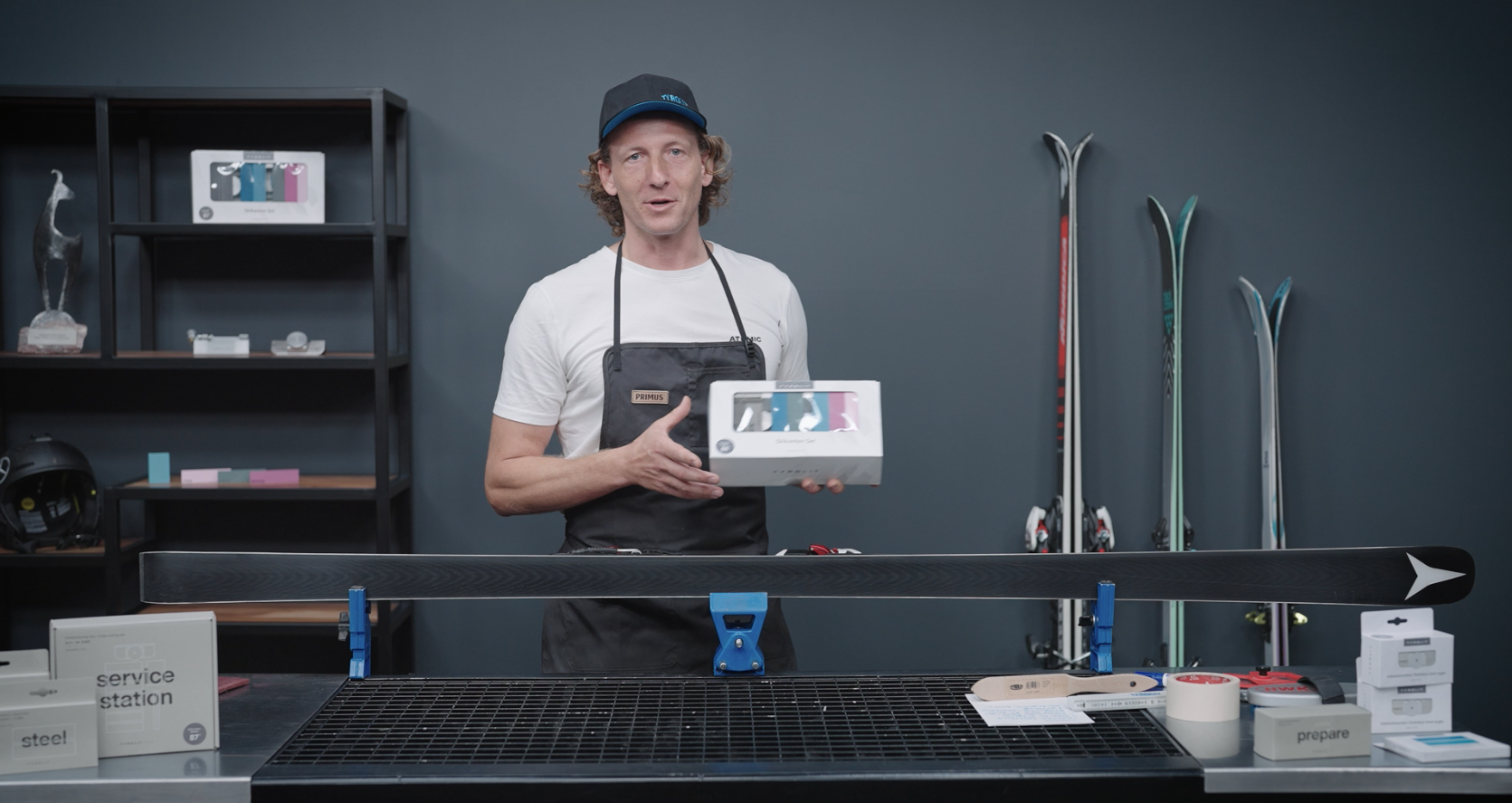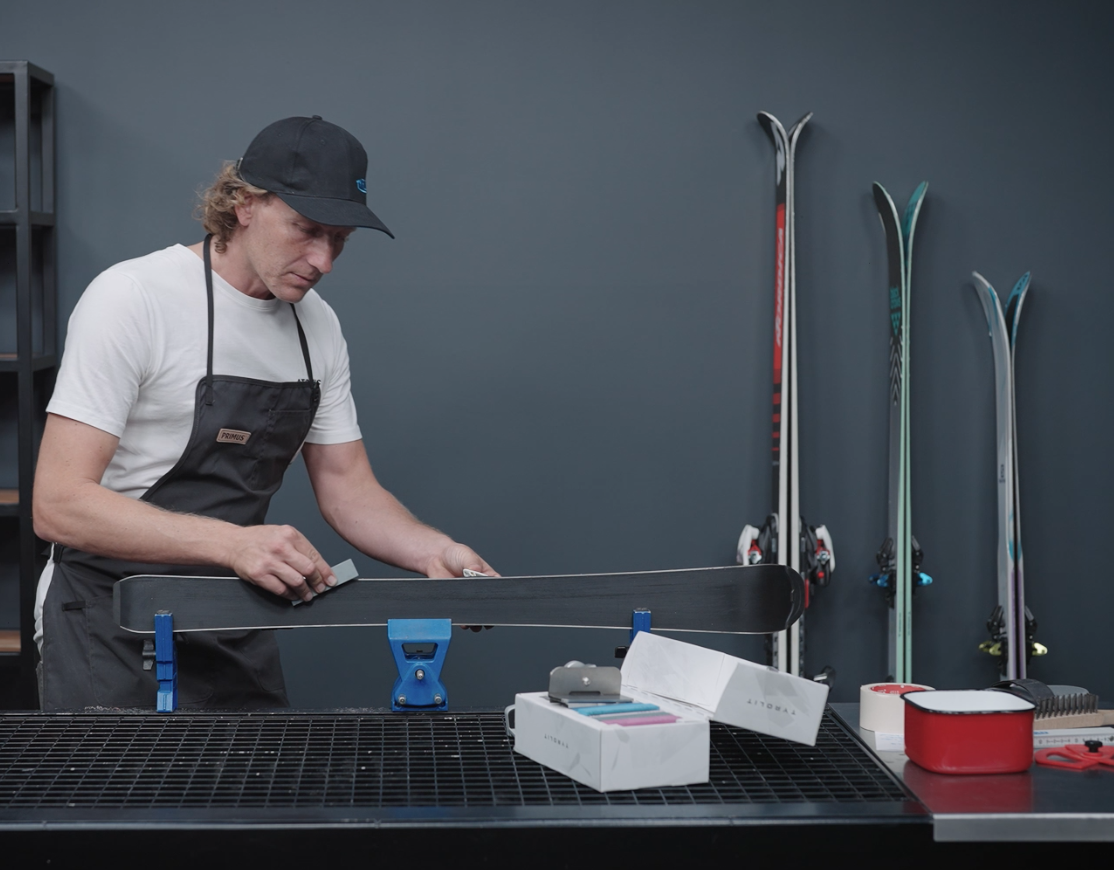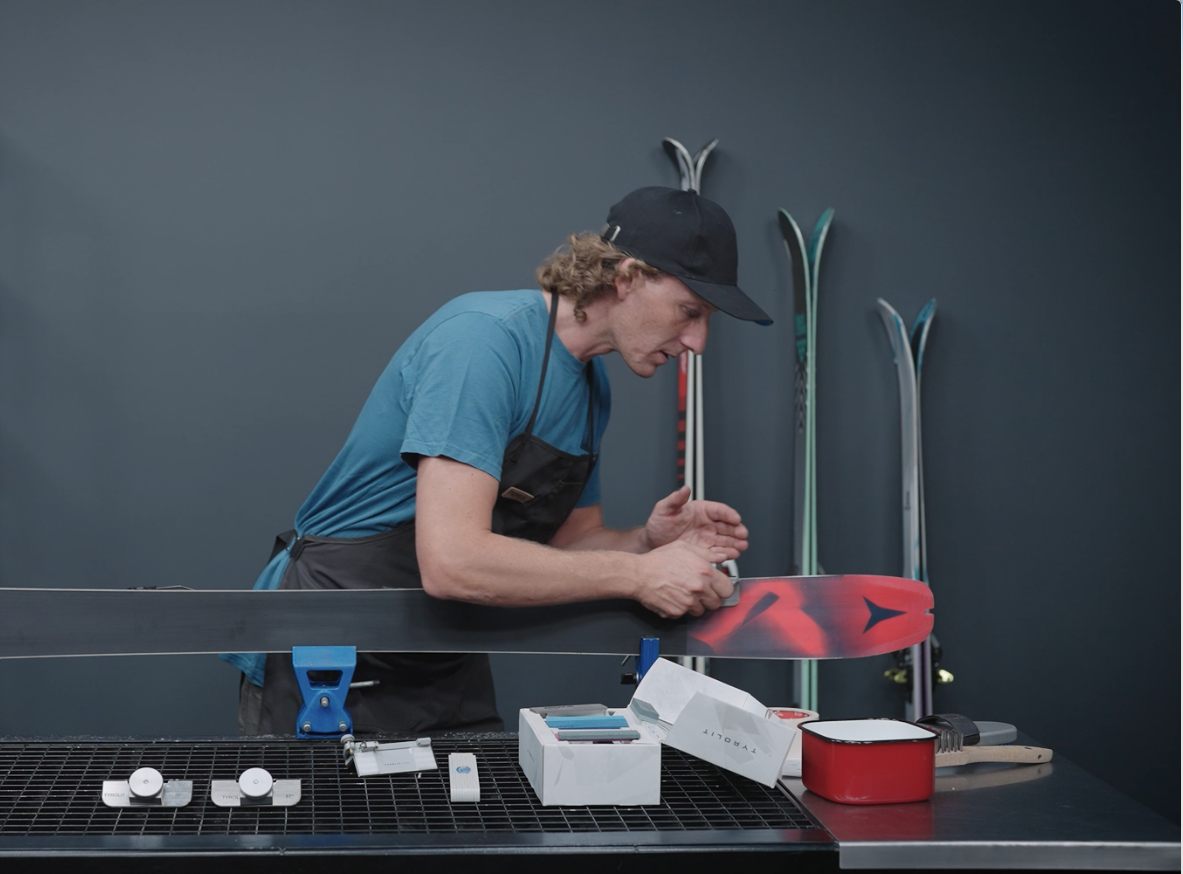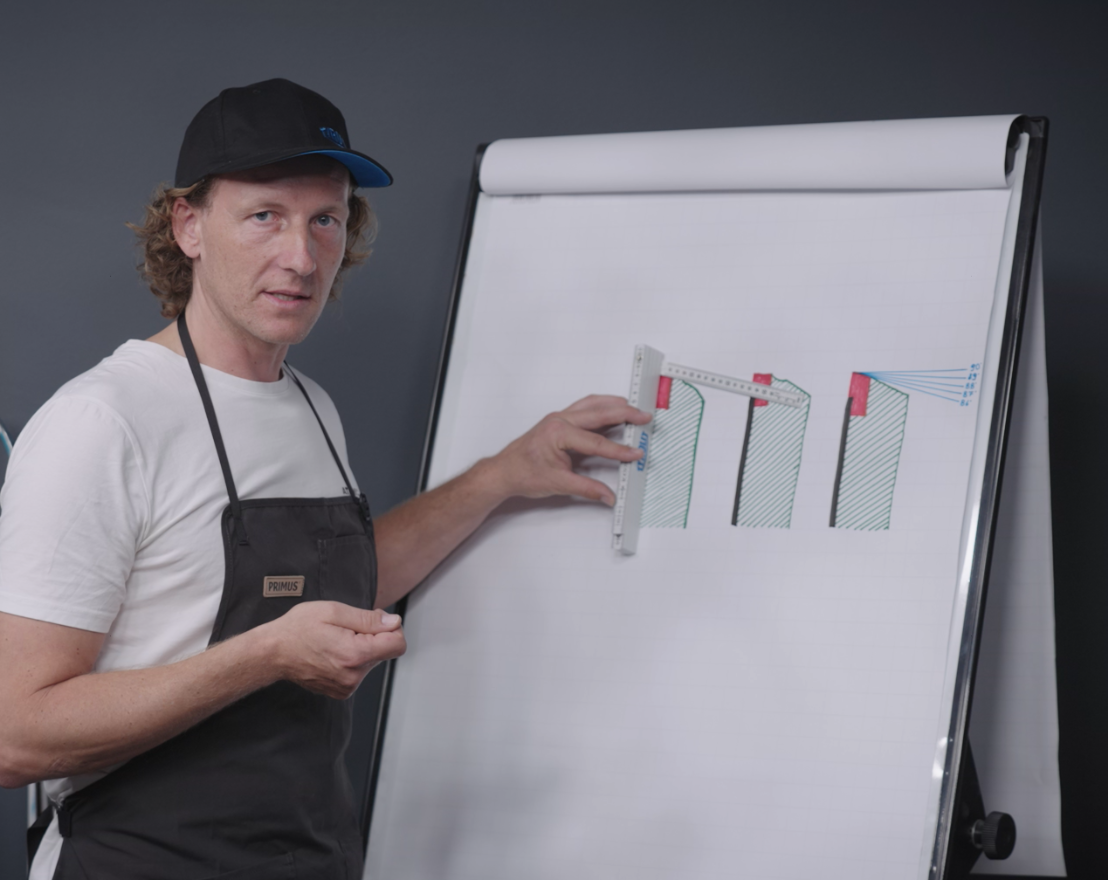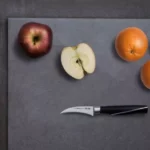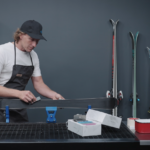Grinding ski edges – an edge tuning guide in 7 steps
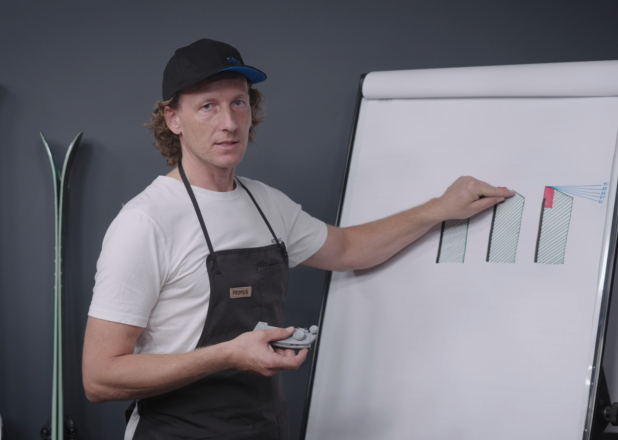
Whether you are a professional racer or an avid recreational winter sports enthusiast, sharp ski edges are critical to a fun, safe and successful on-piste experience. In order to make perfect turns and ensure a secure grip on icy slopes, it is essential to grind the edges of the ski individually and efficiently.
We at Tyrolit Life are dedicated to the art of edge grinding and offer a high-quality 10-piece edge tuning set, which we have developed together with alpine ski professionals from the Ski Austria Service Team over the years. We have created three comprehensive edge tuning sets, each with a grinding angle of 86 degrees, 87 degrees, and 88 degrees.
However, it’s not just World Cup professionals who can benefit from our tools; every winter sports enthusiast can prepare and optimize their own skis, as well as those of their family and friends. For this reason, we’ve compiled the following guide to achieving sharp edges for enjoyable and safe skiing on the slopes. Have fun!
When should you sharpen ski edges?
Ski edges should be sharpened before the season starts, especially if your ski edges have become rusty over the summer. They should also be sharpened if they have sustained damage from stones or hard surfaces during use, resulting in the loss of edge grip and the ski’s sliding properties
Likewise, you should consider tuning the edges if the edge no longer grips or the slope conditions change. For example, less edge sharpness is required on grippy surfaces made of natural snow than on icy artificial snow.
Ski sharpening – when does it make sense?
There are several occasions when you should sharpen your skis. We have listed them here:
- Before the start of the ski season to ensure that the edges are in optimal condition.
- If the ski edges are blunt or worn and the skis lose edge grip.
- After intensive skiing or several days on the slopes to bring the edges back into prime condition.
- If you are on icy slopes and need better control.
- After driving over stones or hard objects to repair damage.
- If you notice changes in driving behaviour or cornering behaviour.
- If you want to change the edge angle to adapt to different snow conditions.
- Before an important race or competition, to ensure that the ski edges are optimally adjusted.
Tuning Ski Edges Yourself – The Process in 7 Steps
With the right tools, proper preparation, and the willingness to do it yourself, sharpening ski edges can be quite simple even for a beginner. It is essential to securely clamp the ski. For this purpose, specific holding devices called ski vices have been specially developed for ski edge sharpening
Alternatively, a wooden vice can be used. If only a metal vice is available, inserting a protective rubber is recommended. Wooden strips can also serve to protect the skis from pressure marks caused by the vice. The use of clamps is another option. The general rule is: the more widely the pressure is distributed, the more gentle it is on the ski’s top surface and base.
If there is as firm a mounting option as possible at a pleasant working height and you have sufficient light, you can start:
1. Preparing the skis
Secure the brakes with a strong rubber band to access the running surface freely. Then, clamp the ski vertically into a designated holder. Ensure the base is facing away from you. Feel the edges with your fingers and also hold the skis against the light, using the edges. If the sun or light reflects off the edges, this offers a clear view of any damage, rust, and critical areas.
2. Clean ski edges
Severely rusted edges are cleared of rust using an edge rubber, both on the side and on the base side. For this purpose, an abrasive fleece is recommended. Hardened patches, bulges, and protruding material, typically caused by stones, should be carefully smoothed out with the combination stone to prevent any damage to the edge files used in step 4.
3. Check ski sidewall – use sidewall puller
Before filing, it must be checked if the ski edge to be worked on is exposed. Or whether the sidewall (made of plastic) above the edge, on the sidewall side of the ski, needs to be trimmed down slightly
If ski edges have been sharpened frequently, this situation might arise. However, as long as there is enough material on the edge and the metal edge is already close to the side wall’s plastic, it is advisable to trim the side wall using the Tyrolit Life sidewall trimmer. If the side wall is not reduced, the desired angle cannot be achieved when sharpening the ski, and the files may slip or smear due to contact with the plastic.
4. Roughly file the ski edge – grind the ski
Clamp the stainless steel files from Tyrolit Life into the stainless steel angle and pre-grind the ski edge. The smaller the angle, the more aggressive the edge. As a rule, an angle of 86 degrees, 87 degrees or 88 degrees is used, depending on the use and ski.
Grinding the ski at the same angle can be done quite swiftly. However, changing the edge angle, for example from 88 degrees to 86 degrees, to prepare the ski for hard conditions and aggressive riding style will require a bit more effort.
Tip: mark the edge with a felt-tip pen – if the colour disappears everywhere after processing, the edge is ground evenly.
5. Deburring and pre-grinding edges
Next, the softer ceramic files come into play. Clamped in the stainless steel angle, they are used to file until an evenly sharpened and smoothed edge is achieved. Gazing into the light and carefully feeling with your fingers help in recognizing the progress.
Tip: The smoother the edge, the more shiny and reflective it is. The still coarse spots appear dull in the light.
6. Fine grinding and polishing of ski edges
Fine ski grinding of the edges. The fine burr created by filing and sanding is removed with the Tyrolit Life elastic files. When used with the stainless steel angle, the edge is polished, perfected and possible unwanted friction due to a non-removed burr or rough spots on the sliding surface of the ski edges is reduced.
7. Tip from experts
To minimize the risk of catching or cross-cutting, it is advisable to dull the ski edges at the tip and tail areas or to detune the edge there. This can be done using an edge rubber or abrasive rubber.
The reason is straightforward, having too sharp an edge at the front (tip) and back (tail) of the ski makes it overly sensitive and aggressive in its turning response
Especially in gliding sections, the classic catching of the skis occurs. Notably, children’s skis become less aggressive by dulling the edges.
Every professional has their own tips and little tricks. The seven steps listed are a guide that leads to a strong result. Always make sure to repeatedly check your bindings – test them with your ski boot and adjust your bindings if necessary
Choosing the Ideal Edge Angle: 86, 87, or 88 Degrees
The importance of proper edge angle when grinding your ski edges cannot be overemphasized. In the following sections, we present you with an overview of three common edge angle options: 86 degrees, 87 degrees and 88 degrees. We will explain the respective advantages and areas of application of these angles so that you can make the best possible choice for your individual needs. The following applies: the more acute the angle, the more aggressive the edge reacts.
Dive in and discover which edge angle best suits your skiing style and current snow conditions:
Ski edges grinding angle 86 degrees – precision on hard surfaces – for racers!
The 86 degree edge angle is a common choice when grinding ski edges and provides a balance between aggressive cutting performance and necessary stability. This angle is particularly suitable for precise driving on hard and icy slopes. We recommend this angle for a racing ski.
The slightly raised angle enables the ski edges to delve deeper into the snow, leading to enhanced grip and increased control during turns. This is especially important for skilled skiers and racers navigating technically challenging courses. However, mastering the 86-degree angle demands certain expertise and experience, as incorrect use may result in excessively aggressive cuts.
Application examples for an edge angle of 86 degrees:
Racing skis, for very fast and safe riding on hard artificial snow or icy slopes. Whenever razor-sharp edges and very aggressive reaction of the ski is desired.
Ski Edge Sharpening Angle 87 Degrees – Versatility for Various Conditions
The edge angle of 87 degrees offers an intriguing alternative to the classic 86-degree angle and has gained significant popularity. Its slightly steeper orientation highlights its versatility, making it perfectly suited for a variety of snow conditions and riding styles.
With an edge angle of 87 degrees, you get a balanced combination of aggressiveness and stability. This angle ensures reliable grip on the piste while still allowing for precise cornering. This makes it an attractive option for recreational skiers who want to tackle different slope conditions without sacrificing precision. With an edge angle of 87 degrees, you are well prepared for any conditions!
Ski Edge Grinding Angle 88 Degrees – Stability and Precision
The edge angle of 88 degrees is among the most common settings for sharpening ski edges and comes with several benefits. This slightly blunter angle adjustment is known for its stability and precision, making it a top choice for specific styles of skiing and conditions.
Skis with an 88-degree edge angle provide outstanding stability on the slopes, even on hard surfaces, without feeling too aggressive. This angle ensures solid grip and allows for precise turning, greatly benefiting both technically skilled skiers and beginners alike. Your skis will be lively and responsive.
Especially for freeriders and freestylers, for children’s skis, variant skiers or for the majority of snowboarders, the edge angle of 88 degrees is the most common choice. Cleanly ground 88 degrees are solid, but forgiving.
They do not overwhelm the rider and remain easy to control even when one is somewhat tired. Do you snowboard? Then read more about sharpening snowboard edges.
Ski grinding at home – will the ski service become superfluous?
Grinding the edges as part of a ski service thus becomes superfluous. Use our instructions for easy ski grinding at home. With our edge tuning sets, you are well equipped to get perfect ski edges.
Repairing or grinding the ski base is of course not made redundant by sharpening the edges. Nor is waxing the skis
In other words, if you take care of clean, sharp ski edges, a ski surface that is as clean, flat and well-waxed as possible is of course just as important. In a car, not only are good tires with sufficient tread important, but also that the brakes work well and the tank is sufficiently full. Then nothing stands in the way of driving pleasure!
The Edge Tuning Set from Tyrolit Life in Detail
The Tyrolit Life Edge Tuning Kit provides a perfect match of tools to ensure sharp edges. It includes two stainless steel, three ceramic and two elastic files, which in combination with the enclosed stainless steel angle ensures optimal results. The ceramic combination file, which can be used without an angle, is ideal for travelling, while the hand-held edge rubber is ideal for rust removal, deburring and cleaning.
Various files are available for precise edge preparation. Stainless steel files are utilized for preparing ski and snowboard edges, allowing for efficient material removal and exact adjustment of the edge angle. The "coarse" stainless steel file, with its rough teeth, is ideal for repairing heavily damaged edges, while the "fine" 2nd-cut file is designed for smoothing out worn edges
The final tuning is achieved through the use of three Tyrolit Life ceramic files. These files progressively deburr, smooth, and sharpen the edges. With the "coarse," "medium," and "fine" grit sizes, you can tailor your sharpening to the specific snow conditions and ensure superior surface quality. The coarse and fine elastic files are ideal for polishing and refining the edges, offering an excellent alternative to traditional diamond files. Due to their elasticity, they provide an even contact area across all ski radii.
The stainless steel angle included in the set allows precise application of the files and offers different edge angle options from 86 to 88 degrees, depending on the selected set. All parts of the set can also be purchased individually. The Tyrolit Life edge tuning set, made in Tyrol, ensures a perfect grip thanks to an exact edge preparation.
New in the edge tuning range: The sidewall puller
The Tyrolit Life Sidewall Stripper or Sidewall Cutter for Ski and Snowboard is an indispensable tool for DIY edge sharpeners. It enables precise removal of the sidewall/side edge, which is essential for accurate filing work on the steel edge. This high-quality product can be used perfectly in combination with edge tuning sets and offers the following features:
- A depth limitation by a brass set screw.
- Two cutting blades with different radii for versatile applications.
- Premium quality for reliable results.
Waxing skis - when is the ideal time?
The skis should always be waxed at the very end, after completing all tuning processes, including structuring or grinding the base. Next comes the edge work. Only after a thorough cleaning should waxing be carried out.
If the base or the edges are in good condition, it is recommended to inspect the base in a dry state. A slippery, slightly waxy feel is a good indication that the ski base is still sufficiently waxed. If dragging or pushing your fingertips across the base results in jerking, sticking, or if the skin warms up due to friction, then it is time to re-wax the skis.
What about snowboarding?
The process of sharpening edges on a snowboard is identical to that of ski edges. The 7 steps, preparation, and tools are handled the same way. Just like with freestyle skis, it's important for snowboarding to know if you're using rails or boxes, and whether you're moving through deep snow or on hard slopes
Accordingly, logic dictates that a razor-sharp edge with an aggressively sharpened angle of 86 degrees is not ideal for riding on boxes or rails. However, this type of preparation is the right choice for race boarders on hard slopes.
The more relaxed and "freestyle" the riding style, the blunter the sharpening angle is recommended. This is combined with generously dulling the edges at the nose and tail. To prevent unpleasant surprises at the kicker or upon landing, meaning that the board is forgiving, thereby reducing the risk of injuries and ensuring fun in the park.
With the above knowledge, the right tool and some practice, grinding the ski edges or snowboard edges is no problem.
In any case, it is important that you briefly check the coating as well as the edge after each day of skiing, so that you can react immediately or plan to regrind the edges before the next day of skiing.
So nothing stands in the way of a safe riding experience or enough fun on the mountain!
You may be interested in these posts with videos:
Grinding edges on freeride skis
For freeride skiers and their ski edges, special conditions apply. Sharpening the edges is crucial for maintaining control in the depths of untouched terrain. Ex-ski racer and freeride pro Matthias “Hauni” Haunholder explains exactly how it’s done.
Grinding edges of freeride skis: grinding edges of freeride skis
Grinding edges on racing skis
For racing skiers and their high-performance racing skis, grinding the edges of the skis is crucial. Ex-ski racer and freeride professional Matthias "Hauni" Haunholder gives insightful tips and tricks in this video!
Edge Tuning for Racing Skis: Sharpening the Edges of Racing Skis
Grinding edges on children’s skis
Ski edges for children's skis should be sharpened before the ski season to ensure they function properly and provide the child with safety and edge grip. Ex-ski racer and freeride professional Matthias "Hauni" Haunholder offers insightful tips and tricks in this video.
How to sharpen the edges on children's skis: Sharpening children's ski edges
Sharpening edges on touring skis
For tourers and their touring skis, well-sharpened edges are crucial. Ex-ski racer and freeride professional Matthias "Hauni" Haunholder provides insightful tips and tricks in this video.
Touring Ski Edge Grinding: Edge Grinding for Touring Skis
Sharpening edges on a snowboard – 7 tips for really good edges
Sharpening snowboard edges - here we offer you a 7-step guide for optimal performance in the park, on the slopes, and in the backcountry. Discover more now!
Snowboard: Sharpening Snowboard Edges
FAQs Ski edge grinding and snowboard edge grinding – tuning
Sharpening skis – Why sharpen ski edges at all?
How sharp do ski edges have to be?
When should you sharpen your ski edges?
Which angle/degree should be used for sharpening ski edges?
How often should you sharpen ski edges?


